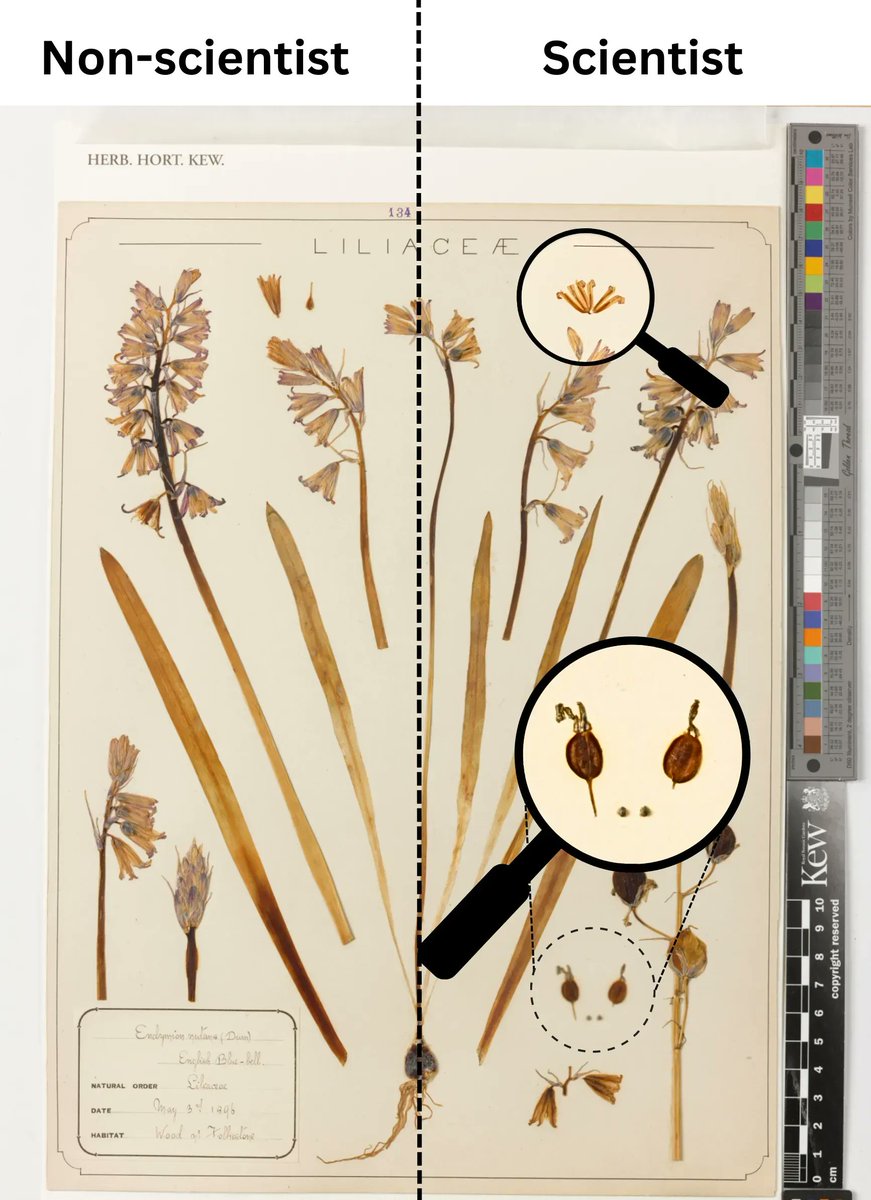Herbarium Specimens: Unlocking the Past and Future
We explore the value of herbarium specimens and how they can be used to unlock medical breakthroughs, understand climate change indicators, and much more. We discuss how scientists can use these specimens to gain a deeper understanding of different species.

Kew Science
🌍🌿🍄 Understanding and protecting plants and fungi for the well-being of people and the future of all life on Earth #OurFutureIsBotanic

-
🌿 Herbarium specimens: What ordinary people see VS what a scientist sees 👀🧪
— Kew Science (@KewScience) June 6, 2023
People often view herbarium specimens as dried up, flattened plants - perhaps with little real-world value. But a scientist can see a window into the past & solutions for the future, such as... 🧵👇 pic.twitter.com/C0esDhgSuL -
🌎 Climate Change Indicators:
— Kew Science (@KewScience) June 6, 2023
When looking at a herbairum specimen, a scientist may see data to predict the future impacts of climate change (by comparing historic specimens with present day ones), allowing the development of strategies to adopt to a new climate 📊 pic.twitter.com/mY6aSRd8bl -
💊 Medical Breakthroughs:
— Kew Science (@KewScience) June 6, 2023
Understanding different species through herbarium collections can be a crucial initial step in developing novel medicines. By studying plant compounds extracted from a dried specimen, scientists can unlock new potential treatments pic.twitter.com/uhudYkC9c1 -
🌽 Future-Proofing Agriculture:
— Kew Science (@KewScience) June 6, 2023
Herbarium collections can uncover resilient wild varieties and lost traits from crops, preserving and reintroducing valuable genetic diversity. A scientist may see a way to ensure long-term agricultural sustainability 💪 pic.twitter.com/0ce4TJFGWE -
🌿 Conservation:
— Kew Science (@KewScience) June 6, 2023
By analysing herbarium specimens, scientists map the geographical distribution of plants, identifying regional variations & tracking changes over time. This information is vital for conservation efforts & studying the impacts of environmental factors on flora 📈 pic.twitter.com/PKkuj1C7Xb -
💚 Protecting Species:
— Kew Science (@KewScience) June 6, 2023
Herbarium specimens help identify & assess the threat of extinction faced by plants. By understanding their distribution and vulnerability, scientists can develop conservation plans to save the 40% of plants now at risk & protect our planet's biodiversity🌱 pic.twitter.com/pRpC2eM58O -
So there you have it – an insight into the mind of a scientist when they look at a dried plant specimen. But did you know that you’ll soon be able to access our collection of 8 million herbarium and fungarium specimens? pic.twitter.com/Yte30t2Jhk
— Kew Science (@KewScience) June 6, 2023 -
As part of our Digitisation Project, we’re bringing our entire collection online to supercharge biodiversity-saving efforts AND it will be totally free for all to use!
— Kew Science (@KewScience) June 6, 2023
Stay tuned to find out when our new Data Portal is live 🙌 #KewDigiProject pic.twitter.com/kHL2hrmAEU
